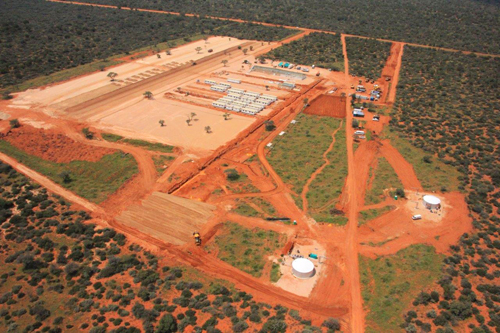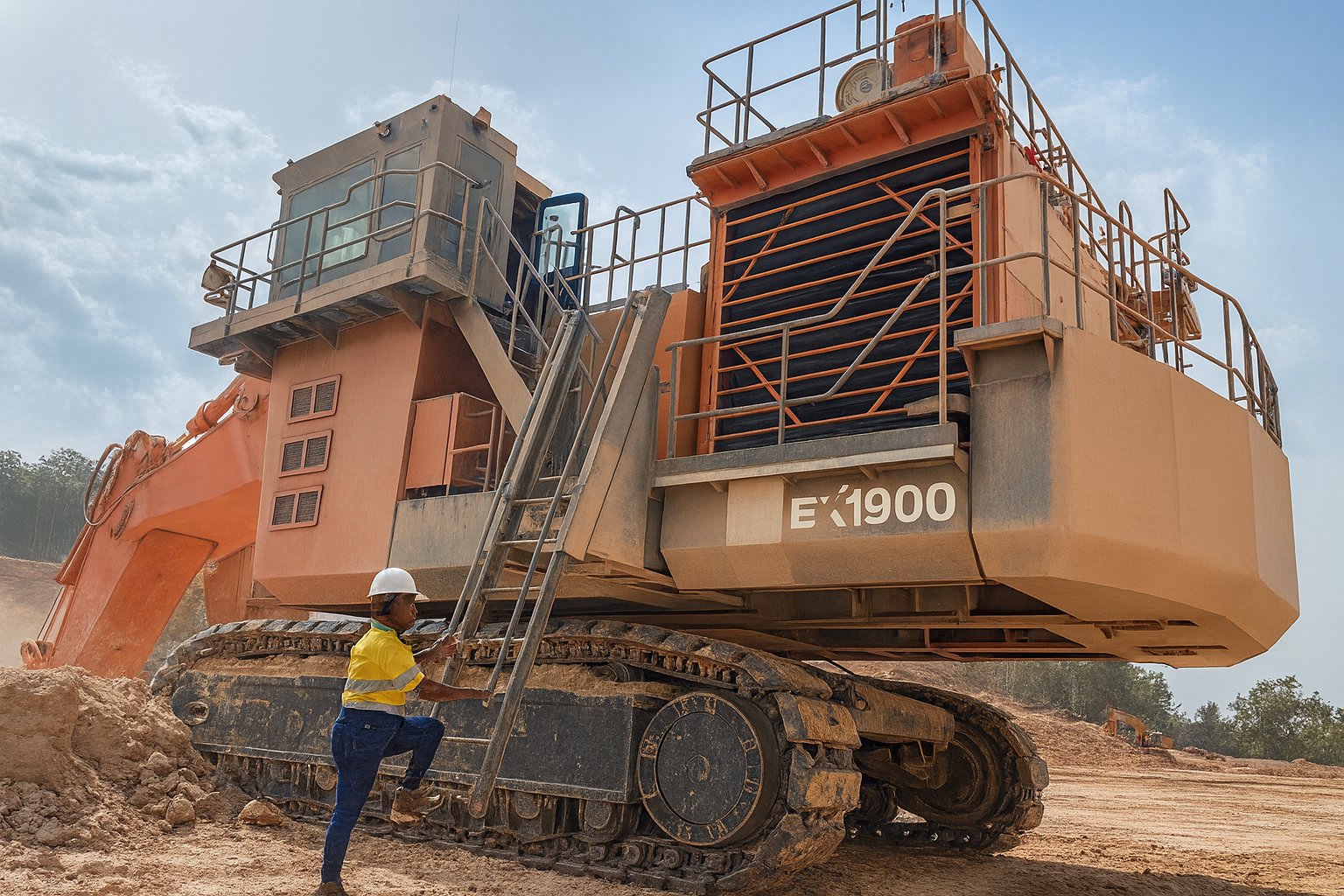
The Boikarabelo field in South Africa's Waterberg region, to the north of the country and close to the border with Botswana, is an outstanding coal asset by any standards. An extensive coal seam, between 120 and 130 metres in depth and containing zones of varying quality thermal and soft coking coal, lies only 20 metres below the surface in terrain that is flat and easy to get at. It is the ideal site for an open pit mine: the shallow overburden means that a small fleet of equipment can produce a lot of coal. Costs will be relatively low, and multiple mining benches will provide the flexibility to extract the coal quality required for a variety of markets, from thermal coal used in power stations in Asia where capacity is confidently expected to continue rising over the coming decade to South Africa itself where there is an insatiable demand.
Nevertheless, with the international coal market currently more nutty slack than briskly blazing, this is a time when only the most outstanding new projects can attract funding. When we last reported on the Australian and JSE joint listed mining company Resource Generation (ResGen) its focus was on locking down its funding arrangements, and this remains its principal challenge today despite solid progress to date. “We hope to complete our funding by June of this year,” says Managing Director Paul Jury. “We are concentrating on funding the coal handling and preparation plant (CHPP). If we can achieve that we will be able to stick to the development programme and start producing coal at the end of 2015.”
At around $200 million the CHPP is the largest capital item for the Boikarabelo project. In November the company took a major step when it agreed to terms and the design and supply of the plant. Earlier this year it put another piece of the jigsaw in place with the agreement of a $65 million infrastructure loan facility from Noble Resources International, a subsidiary of Singapore-listed global agricultural and mining supply-chain manager Noble Group, which as part of the agreement has undertaken to purchase three million tonnes of domestic middlings coal every year, for eight years after production commences. This loan is repayable by 31 March, 2016, by which time the mine is expected to be in production and generating cash flow, and is in addition to a $55.3 million loan from Noble, agreed in July 2013, for the construction of the rail link from Boikarabelo to the existing Transnet Freight Rail network.
The CHPP will crush, screen and grade the coal, stockpiling it into two main categories. Coal for export will be loaded onto rail trucks for transportation to the ports, while thermal coal for domestic use in the power generating stations of Eskom in Mpumalanga will be supplied direct, also by rail. Jury is hoping to resolve the remaining funding issues sooner rather than later so he can concentrate on the work of building the mine, the processing plant and the associated infrastructure, including road and rail links. The project itself is one of the soundest on the planet, which is evidenced by the fact it has continued to remain buoyant at a time when others have been mothballed or abandoned.
Boikarabelo is of strategic importance to the economy of South Africa. The mine is only 40 kilometres by road from an existing rail system that provides access to domestic markets, and Transnet is making all efforts to ensure that its lines have the capacity to transport the coal to the ports of Durban, Richards Bay and Maputo, which all have potential to expand their coal capacity, for export shipments. The proposed new trans-Kalahari railway (TKR) from Walvis Bay to Botswana will give access to the Atlantic though that is an early stage project that was only given the go-ahead by the partner governments in March.
The 40 kilometre rail link that ResGen is building to connect Boikarabelo with the main line is also a long lead item, like the CHPP, however the ground work is well under way says Jury. In fact the site is a hive of activity already, and that activity will increase right up to the start of mining at the end of next year. “We have a lot of construction going on on site,” he says. “Apart from the rail link, we have already built the first stage of our construction camp. By May there will be a good 200 people living there and we will be extending the camp over the coming six months to accommodate 1,300 persons. In addition to that we have started the earthworks for our major roads. As part of the work we have to put in the provincial road bypass and upgrade the main road going up onto the mine and prepare a new access road for the mine. Those things are going forward and also we are starting the foundation works for the coal preparation plant.”
The CHPP is scheduled to come on stream in the first couple of months of 2016, ready to receive the coal that will be flowing from the mine – initially at a rate of five million tonnes per annum (tpa), rising to more than 30,000 tpa by 2030. There's no denying that the mine will have a massive impact on the local community over many years – the mine life is estimated at over 100 years. That being so, ResGen is keen to ensure that impact is seen as a positive one, and not just for South Africa's economy and its energy industry. From two employees on site in February 2013 there are now 250 employees and contractors on site, and their safety is a priority Jury insists. “By mid-February we had worked 300 shifts without a lost-time injury (LTI) – more than 135,000 hours!”
And it is not just the direct employees that are benefiting. The management of the Boikarabelo coal mine holds regular rounds of community engagement meetings. An Executive Community Engagement Forum consisting of representatives from each community as well as members of the Boikarabelo mine management has been formed. Using the existing, traditional communication structures in each community the partners work together to keep each other informed of developments not just at the mine site but throughout the local community. One of the early priorities was to encourage and support the process by which local entrepreneurs and existing businesses from Lesedi village and other local communities can supply the mine. Community engagement remains a priority for everyone at Boikarabelo. “Construction of the mine, and ultimately the mining of the coal, will not be possible without the support and assistance of the local communities around the mine,” Paul Jury acknowledges.
Written by John O'Hanlon, research by Jeff Abbott
DOWNLOAD
 ResGen-Africa-Mining-Jun14-Bro-s.pdf
ResGen-Africa-Mining-Jun14-Bro-s.pdf












